I have been waiting for the Production Notes to be unleashed.  Lots of information here, more information on the film and some lovely words about and from Rob which I’ve bolded for ease, but you really should read the entire notes. Not long to go now until some of us see this film, but I hope social media remains spoiler free because I will cut a bitch if they spoil any scenes for me before I get to see the film for myself.
“LIFE
PRODUCTION NOTES
Anton Corbijn (A Most Wanted Man, The American, Control) presents LIFE, produced by See-Saw Films First Generation Films and Barry Films. From a script by Luke Davies (Candy) the film stars Robert Pattinson (Queen of the Desert, Maps to the Stars, The Rover, The Twilight Saga), Dane DeHaan (Kill Your Darlings, The Place Beyond The Pines), Joel Edgerton (The Great Gatsby, Warrior), Alessandra Mastronardi (To Rome with Love, Romeo and Juliet) and Ben Kingsley (Selfless, Iron Man 3, Hugo).
Inspired by the true story of a friendship that developed between Magnum photographer Dennis Stock (Pattinson) and actor James Dean (DeHaan) when Stock was commissioned to photograph the actor for LIFE magazine in 1955.
Stock was 26 and old before his time when into his buttoned-down world came fledgling star James Dean, a free spirit who would change popular culture from suits to jeans and from matinee idols to teenage heartthrobs. The assignment for LIFE magazine, which took the pair on a photographic journey across the US, from LA to New York and on to Indiana, would change Stock’s life and produce some of the most iconic images of the age.
LIFE is produced by See-Saw Films’ Iain Canning and Emile Sherman (Shame, Tracks) with Christina Piovesan of First Generation Films (The Whistleblower, Amreeka) with Wolfgang Mueller and Benito Mueller of Barry Films. LIFE was filmed on location in Toronto and Los Angeles. The creative team includes director of photography Charlotte Bruus Christensen (The Hunt, Far from the Madding Crowd) production designer Anastasia Masaro (The Imaginarium of Doctor Parnassus, Mama), costume designer Gersha Phillips (House of Cards, The Whistleblower) and editor Nick Fenton (The Selfish Giant, The Double). The film is financed by Telefilm Canada, Corner Piece Capital, LLC, Film4, Screen Australia, Harold Greenberg Fund, Michel Merkt and Union Bank, N.A in association with eOne Entertainment. FilmNation Entertainment is handling international sales.
SYNOPSIS
(from Luke Davies) Young photographer Dennis Stock tries to pin down rising actor James Dean in order to give a LIFE magazine assignment more weight than that of a simple puff-piece. However, when Jimmy is not reluctant, he’s chaotic, swept along by joy, play and mischief. And when Dennis is not annoyed, he’s exasperated, trying to get the elusive Jimmy to focus—or even to show up. From the frenetic energy of New York, the two head back to the heartland—to the Indiana farm where Jimmy grew up—in order to record something of Jimmy’s roots. Dennis thinks he’s capturing a star in the moment before he breaks; in fact, he’s documenting the last moments of intimacy and simplicity that James Dean will ever know. In the process of the journey from Hollywood to New York to Indiana, a deep affection and improbable friendship gradually develops between the two young men.
LIFE’S GENESIS:
More than half a century after James Dean’s death, he continues to fascinate. His life and death are the stuff of legend. But See-Saw Films did not set out to create a generic biopic either to celebrate the myth of James Dean or to refute it. The film-makers saw another possibility behind the icon—a story about friendship and cultural change. Two artists met: one a successful establishment photographer and the other a rebellious actor on the cusp of greatness and tragedy. Their uneasy relationship developed into a camaraderie that produced iconic images of a new generation of discontented youth and a new breed of film star.
The story See-Saw tells emerged from patient research into the lives behind the myths surrounding their subject. Producer Iain Canning observes, “There can be an instant excitement about the idea of doing a film about a real person, but that doesn’t necessarily mean that there’s a story worth telling…. We went through a very heavy research phase, sifting through the myths and trying to get to the truth of the story while also making sure that it was emotionally interesting or dramatically interesting enough for us to start developing into a feature film.â€
Luke Davies undertook the research and writing that became LIFE. He had worked with See-Saw producer Emile Sherman on a film adaptation of Luke’s book Candy, and he knew Iain and Emile well. Luke’s own early life story and writing had brought the collaborators together and sown the idea for pursuing an artist—actor, musician, writer, photographer—as film subject. James Dean was discussed, and Luke took on the project. “I immersed myself in every single piece of information about James Dean,†says Davies, “and in the end I had the broad stretch of his short lifeâ€. But one part stood out: 7 Dennis Stock’s photo assignment trip with James Dean. Luke shared the idea with See-Saw. “That’s our movie,†said Iain. In 2010, Luke started writing the script. It became not a full biopic with a grand sweep, but “a short arc with grand themes,†says Davies.
Luke continued his investigation into Dennis Stock and the background to the famous Times Square shot of James Dean. His research included interviews with people connected to the story, including Magnum executive John Morris (played by Joel Edgerton) and Dennis Stock’s son Rodney, who was seven at the time of the story. As he gathered biographical detail, he made a serendipitous discovery: “Act one, Los Angeles. Act two, New York. Act three, Indiana,†says Luke. “And going back to Indiana is like a journey into Jimmy’s past. Indiana represents traditional America of that era, and there is a tension between the farm and the world of fame.†Davies sees “an incredible turning point in the American zeitgeist†captured in the mix. Here were the origins of the sixties revolutions to come. As Luke observes, “the kids who were fourteen and fifteen years old in 1955 watching Rebel Without A Cause“ saw themselves represented seriously and saw a foreshadowing of the coming cultural changes they would initiate.
“As for finding the right film title, Davies says, “This one was instant. There was never another title.†Dennis Stock is working on a LIFE magazine assignment, and life choices are at the heart of the story. Says Davies, “In a sense the movie is at some deeper level about how mortality should affect the way that we choose to live here and now. So it’s a celebration of life and an elegy for James Dean’s death.â€
With a thoroughly researched, well-written script in place, the development process continued. Iain and Emile approached Christina Piovesan about co-financing the film and producing it in Toronto. She had worked with the See-Saw producers before. Christina says, “Emile and Iain are among the most creative and insightful producers out there. Iain’s creative and narrative skills are so honed, and it was a great opportunity to collaborate with producers who are absolutely at the top of their game.â€
THE STORY
It is hard to imagine the James Dean story without the images Dennis Stock captured. Chance played a role in bringing together the two young men. Dean resisted Stock’s photo assignment until some trust was formed and then only months later Dean was killed when he crashed his Porsche Spider, just after filming Rebel without a Cause and Giant. Dennis Stock’s photographs of Dean appeared in Life magazine and he went on to have a long career living into his eighties, and James Dean became a legend. Now the personal story of that remarkable photo assignment is told. LIFE explores the genesis of and layers behind Stock’s famous pictures, published the day before the Times Square premier of East of Eden and James Dean’s overnight stardom. It humanizes the person behind the James Dean myth and reveals a conflicted young artist who resists the attempts of the industry to turn him into a star. It also personalizes the other man—the artist and documentarian behind the lens and instrument of fame. The authenticity of their story resonates in an era of celebrity culture, manufactured recognition, and cameras everywhere.
The photography from that 1955 trip permanently fixed the image of James Dean and heralded the emerging youth culture. A generation gap was growing, but much of the tension in LIFE comes from the differing sensibilities of two young people. Iain Canning notes that “James Dean was a catalyst in popular culture, for people feeling it was acceptable to take a slightly different route in life, but for the Dennis Stock character, because he has had a family life and because that family life didn’t go to plan, he is looking at this young person and wishing he could turn back the clock.†However, Dennis is “not able to be in the moment†the way that Jimmy is. Stock is struggling with the expectations of fifties conformity, while Dean is comfortably rejecting convention. Stock has been following the socially prescribed script: marriage, career, parenthood. However, he is dissatisfied. His marriage has failed, and he has fled his parental responsibility. But he is still in pursuit of conventional success and works for corporate interests. Luke Davies points out that “Dennis is the hot young photographer for LIFE Magazine, which is read by thirty million people a week, and Jimmy’s a young actor who has made a handful of half hour TV shows and is in a movie that’s about to be released and might make him famous. So at this exact point in time, Dennis is the more socially powerful character, not Jimmy, and for Jimmy it’s this kind of bargain with the devil.â€
LIFE captures James Dean’s dilemma. He desires success as an actor, but he wants to maintain his integrity, and he senses “the power of Warner Brothers and publicity and so on and has very ambiguous feelings about it,†says Davies. He wants the opportunities but with independence, and he would like to elude the celebrity machine. “So Dennis is the kind of person who Jimmy’s trying to avoid,†which doesn’t make sense to Dennis—“who wouldn’t want to have their photos take for LIFE magazine?†Davies calls it “a cat and mouse game†between Dennis and Jimmy. There is friction between them. Dennis sees a professional opportunity, and James fears a professional trap. Cultural tensions play out in the relationship, and the story of their friendship is one of reconciling differences and finding common ground. Eventually, they move toward what Davies calls “a kind of tentative affection†and “by the end of the film, each gives the other a profound gift about how to live. It’s always tinged by the sadness that James Dean is going to die, but it makes the gift no less valuable.†Canning remarks, “We see through 9 this story how James Dean manages to get Dennis to open up and to embrace life in some ways, and then how James Dean is able to embrace the conflict of the commerce and the art of Hollywood.â€
Canning remarks, “We live in a different age now. The documentation of celebrity has radically changed from the time when Dennis Stock was taking photographs to the current situation, and I think that in some ways the film celebrates that freedom in that Dennis Stock went on this sort of friendship trip with James Dean in L.A. and New York and Indiana, but it was just them together going off and taking these photos. It wasn’t as pre-planned or as organized or as complicated perhaps as today, and that’s very much a story of then versus now.†Canning believes that from Dennis Stock’s perspective, the trip was about “documenting this person’s spirit in some way, not capturing a stolen moment but capturing a moment through getting to know the subject, caring about that subject, and understanding them better.†It is the kind of work that has made Anton Corbijn’s work as a photographer celebrated.
ENTER ANTON
In part, Iain Canning’s inspiration for a project like LIFE came from working on Anton Corbijn’s Control, a biographical film about Joy Division’s Ian Curtis. Their association continued. Anton’s renowned career began in photography with his influential work in rock music, from which he moved into music videos and then feature films. Having set up their production company See-Saw, Iain and Emile worked with Anton on projects with Depeche Mode, U2 and Coldplay. While developing their project on James Dean, they saw a natural connection for Anton.
Iain comments, “I think there’s a lot of common ground between Control and LIFE because they both bring Anton to the core of what he’s known for outside of film.†That common ground is photography and the influence of the photographer on the subject. Anton knew well the personal and creative relationships that can emerge, and in making Control he drew on his history of photographing Ian Curtis and Joy Division. He seemed perfect to direct LIFE, “a story about a photographer who works with either actors or musicians in terms of bringing out their soul and their spirit,†says Iain.
Christina Piovesan had worked with Corbijn in Montreal on a music video for Arcade Fire’s song “Reflektor†and says, “I spent hours in the car with Anton as we were location scouting, and he would tell me these amazing stories about all the people that he’s met and photographed.†Anton is “a worldrenowned photographer who has experienced what the film is about in his own life as a photographer†She thinks the film spoke to to him profoundly. “I remember seeing him talking to Rob in the dark room where he, as Stock, is developing the iconic photo of James Dean in Times Square. Anton was guiding Rob through that scene and he was just so animated and seemed to feel so at home in that dark room. It was exciting to see how he was communicating his passion to Rob.â€
Canning notes, “What struck a chord for Anton, was the story of how a photographer can go on a journey with an artist and end up defining the iconography of that artist.†In addition, Dennis Stock’s photo assignment occurred the year of Anton’s birth, 1955, and Canning suggests that Anton felt an attraction to the idea of the photographer-artist relationship forming at the beginning of his own life. The stars seemed to align.
Luke Davies was thrilled when Anton came onboard. He was a fan of Control, and he recognized that LIFE connected with “Anton’s background and passion†because “he started life as a photographer, so he really understood Dennis’ character.†With Anton’s strong vision for the film, Luke knew his script was “in safe hands.†Dane DeHaan and Robert Pattinson echo admiration for Control and confidence in Anton. Says Dane, “He’s a soft-spoken person, but he’s meticulous about the shot itself, and you leave knowing that the film is going to be shot beautifully.†Dane describes Anton creating a reassuring atmosphere of calm, and Robert comments on the “formal elegance to the way Anton shoots things.†“He knows the movie he wants to make,†says Pattinson.
Anton wasn’t initially interested in doing another biographical project, but he wanted to work on subject matter less dark than his previous films, and Iain brought him the “very well-written script†of LIFE. As well, Anton notes “the fact that Stock was a photographer photographing an interesting person who’s well known and who was in the arts. That’s kind of what I do.†Anton’s own career was forged from the close working relationship he established with Dutch musician Herman Brood, who became Holland’s biggest rock star ever. Anton’s photographs were instrumental in Brood’s fame and he remained friends with the musician, as Dennis Stock might have done with James Dean had he not so suddenly died; however, Anton says, “I related to the story of being a young photographer starting out with someone whose career skyrocketed and left me behind.â€
Anton, of course, has achieved his own fame, but he works behind the camera, so he relates to Dennis Stock. (They even share a common inspiration in photographer W. Eugene Smith, one of “the old masters,†says Anton.) He was drawn to the project and committed to it despite a tight schedule—Anton was still working on A Most Wanted Man a month before starting LIFE. “It’s new for me to have films that close to each other, but I think we did very well…it feels like we have something special.†From Anton’s perspective, the strength of the film isn’t merely the James Dean material: “It is really the story 11 of Dennis Stock. We see it mostly through his eyes…and a lot of emphasis is placed on his side of the story and how he experiences this friendship.†The photographer and the actor share the stage in LIFE. Anton observes that “Jimmy and Dennis learn from each other; Dennis gets to look a little bit differently at his relationship to his son, and for James Dean it was quite interesting to have a friend with his own opinion, not a yes man. I don’t think Stock was that kind of guy.†As for the real people portrayed, Anton acknowledges a sense of responsibility for accuracy but also points out that his work is creative: “obviously you want to stay close to the real person and at the same time it’s a film. In a film you always search for some kind of drama, but you don’t try to make a terrible person nice and vice versa. You try to give people depth to their character and motivations.†But it takes great actors to realize a director’s vision.
CASTING
Robert Pattinson plays photographer Dennis Stock. He was attracted to the project as “an interesting period in history and an interesting take on such a massive character as James Dean.†Pattinson says, “I read the script for quite a long time before I decided to do it,†and he was impressed by the “elegant, poetic telling of the story.†The idea of co-starring with an actor his own age was also appealing, and Robert met with Luke Davies and Anton Corbijn to discuss the film. However, he says, “My decision was so dependent on who was playing Jimmy.†Robert notes that a director of Anton’s calibre would not have cast a mere “James Dean look-alike,†but he wasn’t fully committed until Dane DeHaan came on board. (As for the idea of playing James Dean himself, Robert laughs: “Oh no. Not in a million years. Dane’s brave.â€)
And just as Anton and the producers knew they wanted DeHaan, they were equally convinced of Pattinson’s part in the film. Anton recalls, “Rob was quickly on the horizon for me, and after we met I didn’t meet anyone else for that role.†The director also liked that Robert and Dane “are such different actors, and that’s a great thing for the roles they play†since the characters contrast “and you can imagine they could be friends because they’re different and that’s interesting in friendships—you offer the other person something that they don’t have.â€
Writer Luke Davies said the casting was “dream news.†He describes Pattinson’s performance in The Rover as “incredible,†and he knew Robert would be perfect for the part of Dennis. And Dane DeHaan comments, “I really respect Rob’s bravery in jumping into films like this. He continues to challenge himself as an artist, and I’m glad I could go on this particular journey with him.â€
Iain Canning observes that Pattinson “is not interested in following a sort of matinee idol concept, he really wants to play characters that are multi-layered and complicated.†Canning finds it “very interesting that Robert Pattinson’s playing a photographer taking a photograph of somebody who is on the cusp of stardom given what has happened to him in his life and his early fame through the Twilight films.†Christina Piovesan remarks on the circumstance as well: “As a young actor who has been at the center of all these photos all the time, now he gets to play the other side. It’s so exciting.â€
Robert took the photographic element of his role seriously. Iain says, “Rob has been obsessed about the details of the photography and getting it right.†Robert discusses that attention to his character’s art: “A few months before production, I started shooting on the same Leica that Stock had.†He describes traditional photography as a dying art and says, “There’s something quite gentle about it compared to digital photography because you can’t force a picture. You can’t shoot as if you’re on an iPhone and just put a filter on it afterwards.†Robert even went to the Leica office in London for guidance but says, “it takes a long time to be able to take even okay pictures, let alone good ones.†Still, he wanted to understand his character’s world, both the professional and personal experiences.
Canning remarks that “In embodying the role, Rob has grappled with how important it is to understand the emotional dynamics of Dennis at the time, to understand that it was an era whereby men of twenty seven were expected to have settled down, to be living a certain life, and Dennis Stock wasn’t living that life.†Dennis was struggling with where he fits in in the world. Canning remarks on the energy Robert brings to his performance, “a beautiful mix of empathy†and “vulnerability†in his character’s resistance to “the expectations of settling down and living your life in a certain way†and “how emotionally complicated it is to be a good father.†The character is grappling with the price of success and weighing it against the value he placed on fatherhood.
Robert was intrigued by the conflict and Stock’s rejection of his parental role: “I liked that Dennis Stock is written as being quite a bad dad. Regardless of the period or of James Dean, in a movie you don’t normally see a guy who had a kid pretty young and thinks it’s restricting his life as an artist, or whatever it is that he wants to be, and is very open about it. It’s quite frankly dealt with in the script.†Pattinson adds, “the idea of having a seven-year-old kid is interesting for me. That doesn’t happen very often for people my age.â€
Dennis also questions his professional role. Robert says, “He was a step above a paparazzi and forced for financial reasons to be a commercial photographer, and he doesn’t really have any artistic flexibility in his work. He just does what he’s told, and it’s kind of suffocating him. He’s been in L.A. for a while and is beginning to think that he’s wasting his life. He’s approaching thirty and he hasn’t proven anything, doesn’t have any money, and he’s abandoned his family in New York.†At the same time, says Robert, Dennis has a degree of professional status. “The world wasn’t so saturated in images of celebrity, so the images in LIFE magazine were heightened, and they weren’t trying to knock celebrities down in the photos. There was a fascination for people, and I think the subject could trust the photographer a lot more.â€
But gaining James Dean’s trust was still part of Dennis’ challenge. Ultimately Jimmy gave Dennis a lot of access, but it took time. The effort was worth it. Robert says, “Dennis realized how famous Jimmy was going to become quicker than Jimmy did.†It was a great professional opportunity for him, though Robert says, “I think Dennis’s biggest problem is he can’t appreciate his own work. He was taking good photos before he met Jimmy, but he just didn’t regard them as anything worthwhile and wasn’t being rewarded for them.†The photo assignment was going to bring Dennis acclaim, but perhaps more importantly, at a personal level, “because Jimmy likes him and gives him approval of the photos, it allows him to think of himself as an artist because he respects Jimmy’s work so much.â€
NOT A LOOKALIKE
The cast and crew of LIFE all agree that Dane DeHaan is perfect for the part of James Dean; however, he took some convincing. Anton recalls that “There were a lot of people wanting to play James, but the one meeting I really wanted to have was with Dane, who didn’t want to meet me because James Dean was his favourite actor and he didn’t like the idea of stepping into his shoes.†Although he thought the script was excellent and he admired Anton, Dane readily admits to his reluctance and says it was a long process before he agreed: “The script came to me about a year before production, and when I first read it I thought there was no way I could do it. I think I said no to this movie five times before I finally agreed to take it on.â€
Dane says people were confused by his reaction because he was offered what he considered “a great script and a great director.†How could he be “enthusiastic about a script and director and still not want to do the film?†The answer, Dane explains, was “because of my love for James Dean and my respect for him. He’s somebody I’ve kind of put up on a pedestal, and I don’t think of myself as like him.†A turning point in Dane’s thinking came from a conversation he had with producer Iain Canning: “He explained what the movie was about, and he said it is an opportunity to show people who James Dean really was. They have an idea of him, but it’s inaccurate.†In addition many younger people “don’t know who James Dean is now,†so the film is a chance to introduce him to a new audience.
Ultimately the nature of the story, the challenge of the role, and his love of acting convinced Dane. The part scared him, but he knew it would stretch his abilities and help his acting grow: “The appeal was totally the impossibility! It’s not fun to do stuff that would be easy.†Others were convinced he was perfect from the beginning.
Iain Canning recounts that “Dane DeHaan as James Dean was our dream from the start, and it was quite difficult for us because as more of Dane’s films came out, we became more obsessed about him playing the role.†The goal was to sign the best actor and not “fall into the trap of wanting to find an exact lookalike.†In fact, Anton says, “For Dane it’s quite a physical change. He’s quite slender, so he had to get his kind of body from the fifties which is different than all the abs the actors have these days—more like a farmer’s—and it was amazing.â€
Dane talks about the physical challenge of playing James Dean: “I had to gain twenty-five pounds in three months for the role. I worked with a trainer and ate a lot of food to get myself to look physically more like that.†He also had makeup artist Sarah Rubano, with whom he had developed “a great collaborative relationship†on Spiderman. “I asked her if she thought she could make me look like James Dean,†says Dane, and she did. Her attention to eye colour, hair (Dane calls James Dean’s hair “the best there ever wasâ€), and even the details of accurate eyebrows and ear lobes lend authenticity to Dane’s portrayal. “So all in all I think every day it’s about two hours of makeup that I go through before I’m onto set.†Dane also praises Gersha Phillips, the costume designer, who he says “did a really amazing job of finding wardrobe that is pretty much exactly what he wore, like the Times Square coat that I wear a lot throughout the movie. A lot of the clothes are actually from the period.†The effort isn’t just for the audience: “When I can look in the mirror and actually see that I look like him, that gives me a lot of confidence.†His co-star is sold on the performance. Robert Pattinson thinks that DeHaan “has really locked into the character. You can see Jimmy’s mannerisms in Dane’s performance.â€
But the role called for much more than physical characteristics. Canning says, “although Dane looks staggeringly like James Dean throughout the film—what was important to us was that we got the earthy beauty of James Dean. Dane has brought the voice and the physique and the temperament of James Dean, but he’s also brought the person, and that’s what’s so special. It’s not a caricature. He’s not playing the James Dean in the films, which were roles for James Dean. He has found a real person in the character behind those films.â€
DeHaan was well aware of trying both to capture the real individual and to acknowledge the legend: “Everyone has an idea of who he was. So you do have a responsibility to in some ways honour that but also try hard to break down conventions and to show who he really was as a person, not who people think he was. That’s a fine line and that’s where the big responsibility lies because people are going to go into the film with an idea of who he was—and they might see flavours of that—but ultimately—hopefully— they’ll learn something about him.â€
Dane agrees that LIFE is not a standard biopic. “It’s two weeks of James Dean’s and Dennis Stock’s life, but it’s a crucial two weeks.†Dane calls it “more a character study than a biopic†and notes that “At this time, no one really knew who James Dean was beyond Hollywood and his hometown. East of Eden hadn’t come out; Rebel Without a Cause and Giant weren’t even shot yet.†The James Dean of LIFE is on the cusp of success, and Dane says, “I could relate to what’s it like to have impending fame and the mixed emotions that go along with that.†In contrast to the 1950s, celebrity culture has changed in terms of the speed and access to information and photography, but says Dane, “What hasn’t changed and what’s interesting about the film is that fame is complicated, especially for those people going through it. The film does a really good job of showing how what looks shiny and perfect and new and exciting on the outside can be a struggle to go through personally.†As far as that personal experience, Dane researched his character extensively: “I had a solid three months to read every book I could get my hands on, watched a lot of his interviews and found a really great recording that he did when he went home to Fairmount with Dennis. He had one of the first hidden spy recorders, and he recorded the conversation that he had with his family at the dinner table.†Dane describes the opportunity to prepare so thoroughly “a luxury…an ideal situation.†He searched for and found the James Dean beyond the legend and the roles, the James Dean that influenced Dennis Stock’s life.
Dane reflects on the relationship at the heart of the film: “Dennis especially has a huge arc in the film, and Jimmy is kind of a catalyst for that arc. They learn from each other. Jimmy’s going through a lot of changes in his life, and I think in these two weeks he starts to realize how the family and the home life that he had is slowly slipping away from him, and Dennis helps him to realize that.†At the same time, Dennis “is always worrying about the future,†so he is affected by “Jimmy’s ability to live in the present.â€
DeHaan sees LIFE as “a movie about two artists of a different mind coming together and finding out things they have in common and growing from that experience.†Sir Ben Kingsley plays studio executive Jack Warner, the man who may control James Dean’s acting future. Producer Christina Piovesan calls the casting perfect “because we needed someone who’s charismatic but also endearing to the audience.†Iain Canning comments on Warner’s embodiment of both power and mentorship, and Dean’s response to the executive. Jimmy doesn’t want to be controlled, but he can’t ignore Warner’s success in building stars, directors, and films. Canning remarks, “What’s so fantastic about the performance is Warner’s mixture of being an absolute tyrant and also being the uncle you would go to for advice, and I think Ben Kingsley brings those two qualities, sometimes in the same line.â€
Dane DeHaan experienced the impact of that cameo: “I feel in a lot of ways that Ben shocked me into the movie because it was about the second or third day of shooting and all of a sudden he was there playing Jack Warner, who’s such a powerful, intimidating kind of person.†The impact wasn’t limited to the performance. Dane recalls, “And then they called cut, and he started reciting Shakespeare between takes. It was the full Ben Kingsley experience, and it was really amazing. To have him on this set was something special.â€
Joel Edgerton plays the head of the Magnum Photo office in New York, John G. Morris, who helped put together Dennis Stock’s photo shoot with James Dean for LIFE. Writer Luke Davies is a friend of Edgerton, who had casually joked with Luke about finding a cameo in the film. Joel’s initial interest came from knowing about the project through Luke, but ultimately he thought the screenplay was excellent and the subject matter a “fascinating†treatment of “one of the most mysterious figures in the history of movie making.†Joel liked that the script didn’t try to cover the arc found in many biopics: “there are some fantastic ones, but a lot of them feel like the same movie as in a shopping list of a person’s entire life†with a formulaic rise, fall, and redemption pattern. He praises LIFE‘s “intense look at something very important†and relates to its message about the “dance with fame.†Furthermore, Joel was a fan of Anton’s work and confident in the director “having the right team, the right aesthetic, and understanding how to tell a good story.†He also knew Robert Pattinson through The Rover (“I was very impressed,†says Joel. “He knocked me sideways a bit.â€) So he was pleased to take on the role of Morris, a character Iain Canning describes as “gruff but warm,†qualities that Edgerton captured. Canning describes “Joel’s fantastic sort of older brother and mentor quality.†Morris knows “when to push and pull on Dennis Stock and the other Magnum photographers in order to set the benchmark which they’ve got to hit.†Joel’s delivery, says Iain, makes “you understand the gravitas of Magnum…because it was such a place of excellence†as an agency devoted to photojournalism and the art of photography.
Davies had interviewed the real John Morris, and Joel asked Luke a lot of questions about the agency executive. The critical thing, Luke says, was to capture Morris’ “incredibly centered†personality and awareness of the important purpose of Magnum’s work. Luke says, “John Morris was there on the ground making that work possible, and I think Joel got that and played him to a tee.†Morris assists but also challenges Dennis. Joel says that Morris serves as “kind of a call to arms†for Dennis and reflects Dennis’ progress because he has to “keep checking in with Morris, and through those conversations you see Dennis’ struggle†and Morris’ evaluation of him. Iain says the part “is essential to our film because it makes you feel that Dennis had to achieve something, not just for himself, but just also to deserve the title of being a Magnum photographer.†And in the end, Morris validates Dennis’ accomplishment with James Dean.
Alessandra Mastronardi plays Italian-born actress Pier Angeli, who had a romantic relationship with James Dean. She is a significant presence in a story predominantly focused on two men. Iain Canning says it was wonderful to have “the energy and soul†of Alessandra’s performance woven into the film. As well, he calls this “an important role to get right because we definitely wanted to bring an Italian actress into the film for the flavour of European filmmaking and film stars at that time.†Although she is a counterpoint to the male characters, Pier also serves “to show an actor who knew how to play the game, which is at odds with what James Dean was willing to do,†says Iain. “She understood that was not a bad thing for actors to do, that they weren’t passive in that relationship.†Pier knows how to make the career and fame work for her, and Iain says Alessandra’s performance captures that understanding. She also delivers “an energy that reacts very differently when in scenes with Dennis Stock and then in scenes with James Dean. You can feel the slight friction in the Dennis Stock/Pier scenes because in some ways they both know what James Dean is and the potential that he has.â€
ABOUT THE PRODUCTION
LIFE is set in Los Angeles, New York, and Indiana. Beginning February 18, 2014, principal photography was shot in Toronto and rural Ontario. The location later moved to Los Angeles where filming took place at the Chateau Marmont and Pantages Theater, which was transformed to look as it was at the 1954 premiere of A Star is Born. Filming wrapped on April 1, 2014.
Iain Canning talks about the design of LIFE: “One of the biggest challenges is to link up our film photography with the actual photography of Dennis Stock.†They had to integrate the original photography with the “poetry of the film.†It was important not to compromise the film for the sake of documentary accuracy, but the iconic photography and the emotional associations with it had to be honoured, too. Canning says, “And so to do that, we had to raise enough money to make sure the production design and the feel of the film and the look of the film made sense for people who would go back and reference the photography.†After all, this “is not a film with a gun in it. There’s no murder.â€
The emotional drama of the film comes from the personal stories behind the iconography. Iain says, “hopefully we managed to balance those things so that when people watch the film they can step back into a world that they had never seen because it was such an intimate journey between these two people.“
Production Designer Anastasia Masaro talks about her preparation for the film: “This movie was different for me because we were dealing with real people and real places loved by many all over the world. I wanted to be respectful while also supporting Anton’s artistic vision.†Anton told Anastasia from the start “that he didn’t want a stylized version of the fifties. He wanted it to look real. His framing and compositions would be the style. So, I built a colour palette for Los Angeles, one for New York and another for Fairmount (which was an amalgamation of the first two).†Her approach meant extensive research: “I read biographies on both James Dean and Pier Angeli, and watched countless movies. I had amassed a large amount of reference, but my gut told me to keep going. So my set decorator and I drove down to Fairmount, Indiana, Jimmy’s hometown.†They met with Marcus Winslow, who showed them the “large and majestic†Dean family property and provided details about the house in 1955. Based on the visit, she says, “In the end we chose two houses, both on the same property in Ontario. We used one for the interior and the other for the exterior and barn.â€
Marcus Winslow also had the Fairmount Museum opened for them. They were able to see some of Jimmy’s things up close and in colour. Anastasia comments, “That was huge so much of the reference was black and white. There’s a danger with black and white photos—many people think that everything is just a variation of beige, black or white. We were taking photos of colours and turning them into black and white to see how they contrasted, how they worked with each other.â€
On the Indiana trip, Anastasia also visited Dave Loehr at the James Dean Gallery: â€That proved a little goldmine as well—he had a binder of old photos of Fairmount’s main street which were indispensable in creating our own version in Millbrook, Ontario. He also had a few of Dennis Stock’s contact sheets from his trip to Fairmount with James.â€
Production took careful control of design, but there was no controlling the weather. Christina Piovesan of Toronto-based First Generation Films talks about the difficulty of shooting LIFE on location in Canada: “We were excited about having these great filmmakers here, but they happened to come during the coldest winter in Toronto’s history of the past decade, so we were shooting in minus thirty-five degree Celsius.†With extensive exterior shots, especially the scenes set at the Dean family farm in Indiana, the weather became a huge factor for all concerned. Anton Corbjin describes it as “an incredible challenge that was really tough at times.â€
Christina comments on the amount of outdoor filming: “There’s a huge section that takes place exterior on a farm, and Rob and Dane are in period costumes that are so slight while the crew were covered from head to toe with only eyes showing. They were such troopers to be shooting with Anton in this brutal weather. The environment was hostile, but you can’t tell when you watch it, and that’s a testament to how professional they are.†Despite the conditions, the actors performed and the crew persevered. Christina says, “There’s one scene in particular outside amongst the livestock, and James is playing the bongo as Dennis is taking photos. It was such a sight because Dane’s fingers were freezing and he’s trying to play the bongo. Cows and a hog are running by, and Rob’s chasing Dane, and it was just very, very funny, but at the same time the crew was shivering and it was super painful to be in that weather.â€
Luckily not all the locations were outside. But the production designer was challenged to accurately reproduce some specific sites. One was an acting studio where Dennis photographed Jimmy. Anastasia explains: “We built the Actors Studio set at a location. Research showed that the Actors Studio was undergoing a renovation at that time and the photos that Dennis took of James were actually taken at the Malin Studio in Times Square.â€
Another location was Dean’s New York apartment: “Jimmy’s apartment was a real treat to get to build.†However, Anastasia says, “The only photos I could initially find were some of Dennis Stock’s and some of Roy Schatt’s photos of the apartment. But I couldn’t find any pictures of the other side. Enter Russell Aaronson—the man who’s been living in the apartment for 40 years. He very kindly let me in to measure the space, and that’s when I figured out there had also been a potbellied stove in the room. Russell was extremely generous with me and gave me further reading material.â€
Luke Davies, the screenwriter, also gave Anastasia many leads: “We pieced together that there had been a piano in the apartment (you can see a piano bench in the famous photos). As for the rest of the details, I read and read and kept reading and tried to include as much as I could—I put some of Marcus’ drawings up on his walls.â€
With the design elements and period realism developed, the cinematography was established. Anton Corbijn talks about the look of the film: “The way I photograph or visualize things is darker than this film, and Charlotte Bruus, the Director of Photography, is lighter, so it’s interesting to let that come into my life a bit.†Although they hadn’t collaborated previously, Charlotte Bruus remarks, “I love Anton’s previous films and the style of the projects.†She describes their common interest in “human stories and focusing on personalities and personal development.†On that topic, Anton observes, “Like all my other films, it is still about loners, except now it’s two instead of one.†He laughs, “I’m doubling up.†Charlotte is drawn to similar material, but she notes their different backgrounds: “I’m coming from moving images, and Anton’s coming from the still images, so we kind of challenged each other in a very interesting way.â€
Dane Dehaan noticed the collaboration: “Working with Anton was really interesting because he comes from a background of photography. He has this beautiful collaboration with the DP that I’ve never seen before. They’ll take a lot of time setting up the shots and discussing details, and it’s an amazing thing to watch.â€
Charlotte discusses the style they were striving to achieve: “The general look is trying to stay true to real world 1955.†The lighting needed to match “the documentary kind of feel of the scene so that it became James Dean’s and Dennis Stock’s actual life and not look like James Dean in the movies.†Charlotte and Anton didn’t have a lot of preparation time together before the shoot, but they had “the essential talks about the colours and what colours to avoid and the tone of the colours.†They had felt “passionate about shooting on film for this project†because of the era and the major role of 35 millimeter film photography used by Dennis Stock in the story. As well, “Anton shoots on 35 mil, and it’s just very good for shooting real life.“ They felt that film would tie everything together to achieve the cinematic look they wanted; however, for financial reasons they ended up shooting digital on the Alexa camera. Still they tried to get the look of film with the price of digital. They used “some old lenses from 1955†and the compromise pushed them to find ways to get the desired effect and decide where it was more important to match the old style, and ultimately, Charlotte smiles, “Pulling out those old photographs has brought out a lot of great energy!â€
CAST & FILMMAKER BIOGRAPHIES
THE CAST
ROBERT PATTINSON – Dennis Stock
Robert Pattinson is best known for his portrayal of the vampire Edward Cullen in The Twilight Saga. Most recently, Pattinson appeared on screen in David Cronenberg’s. Maps To The Stars opposite Mia Wasikowska, Julianne Moore & John Cusack as well as with Guy Pierce in David Michôd’s The Rover. Both films premiered at the 2014 Cannes International Film Festival. He recently wrapped work on Werner Herzog’s Queen of the Desert opposite Nicole Kidman.
Pattinson gained industry notice at 19 years of age when he joined the Harry Potter franchise in Mike Newell‘s Harry Potter and the Goblet of Fire, playing Cedric Diggory, Hogwarts’ official representative in the Triwizard Tournament.
Pattinson starred in David Cronenberg’s film adaptation of Don DeLilo’s Cosmopolis and in Water For Elephants, joining director Francis Lawrence and co-stars Reese Witherspoon and Christoph Waltz in bringing the New York Times bestselling novel to the screen. Prior, he headlined the drama Remember Me, directed by Allen Coulter, appearing opposite Pierce Brosnan, Chris Cooper and Emilie De Ravin. Pattinson starred in Bel Ami, a film based on the novel of the same name written by Guy de Maupassant in which he played a young journalist in Paris who betters himself through his connections to the city’s most glamorous and influential women, played by Uma Thurman, Kristin Scott Thomas and Christina Ricci.
Pattinson began his professional career with a role in Uli Edel’s Sword of Xanten, opposite Sam West and Benno Furmann. He also appeared in director Oliver Irving’s How to Be, winner of the Slamdance Film Festival’s Special Honorable Mention for Narrative Feature. Pattinson played the lead role of Salvador Dali in Little Ashes, directed by Paul Morrison. His television credits include The Haunted Airman for the BBC.
As a member of the Barnes Theatre Group, Pattinson played the lead role in Thornton Wilder’s “Our Town.†Other stage credits include Cole Porter’s “Anything Goes,†“Tess of the D’Urbevilles†and “Macbeth†at the OSO Arts Centre.
…
CAST (in order of appearance) – oh so Rob’s in the opening scene. Brilliant!
Dennis Stock ROBERT PATTINSON
Nicholas Ray PETER LUCAS
Natalie Wood LAUREN GALLAGHER
Messy Actress KENDAL RAE
Boyfriend DREW LEGER
James Dean DANE DEHAAN
Pier Angeli ALESSANDRA MASTRONARDI
Raymond Massey JOHN BLACKWOOD
Journalist JASON BLICKER
Publicity Trooper EMILY HURSON
Roger KRISTIAN BRUUN
John Morris JOEL EDGERTON
John Morris’ Secretary EMMA PEDERSEN
Norma STELLA SCHNABEL
Jack Warner’s Assistant ALLISON BRENNAN
Jack Warner BEN KINGSLEY
Marshall (ASIB) PHILIP MAURICE HAYES
Premiere Driver DAVID ROSS PATERSON
Photographer #1 MARK JAMES FERNANDES
Photographer #2 STUART MCLEAN
Premiere Photographer ANTON CORBIJN
Building Manageress PAULETTE SINCLAIR
Rodney JACK FULTON
Barber SALVATORE ARGANTE
Elia Kazan MICHAEL THERRIAULT
Julie Harris CAITLIN STEWART
Reporter #1 DAVID TALBOT
Reporter #2 JIMI SHLAG
Reporter #3 STEVE CUMYN
Lee Strasberg NICHOLAS RICE
Veronica KRISTEN HAGER
Male Actor JULIAN DeZOTTI
Carol JESSICA ROSE
Eartha Kitt KELLY MCCREARY
Bar Girl REBECCA EADY
Waiter DWIGHT IRELAND
Uncle Marcus RON WHITE
Markie KASEY LEA
Aunt Ortense EVE CRAWFORD
Grandma Dean BARBARA GORDON
Grandpa Dean REG DREGER
Senior Boy STEPHEN JOFFE
Senior Girl JESSICA CLEMENT
High School Hop Girl SARA WAISGLASS
High School Hop Boy ADAM CABRAL
Tailor GERRY MENDICINO
Cab Driver RENATO RIZZUTI
Reporter ANDY TRITHARDT
Mother JUNO RINALDI
Son JAKE JANUARY RINALDI



 Turning the page on the calendar. Happy belat
Turning the page on the calendar. Happy belat





















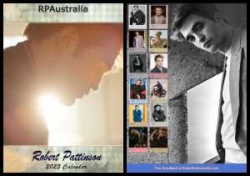










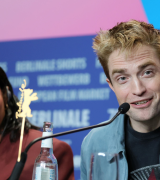
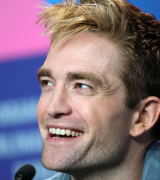






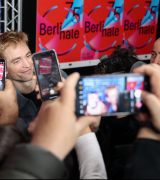
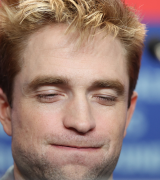


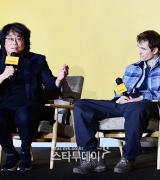
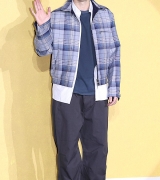
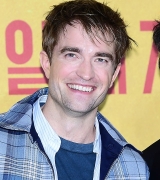
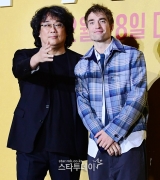
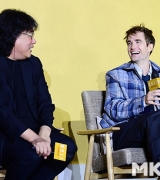
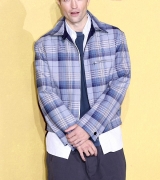
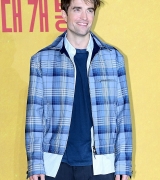
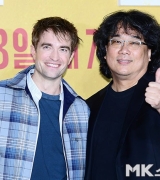
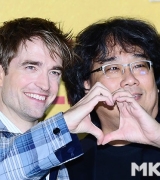
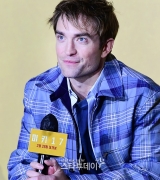
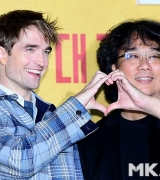
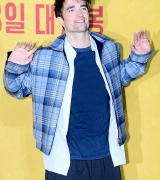
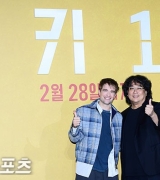
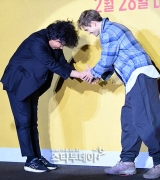
Posted on February 05, 2015
Thanks for the night-time reading, Maria. Can’t wait for this movie. I’ve really got to stop saying that, I know.
Posted on February 05, 2015
Oh wow! The excitement, pride and energy of this movie seems palpable. All these great young artists on the verge, exploring what is like to be great young artists on the verge.
And once more there is my image of Rob and the Leica… with the added romance of London
Posted on February 05, 2015
Reading these wonderful notes makes me even MORE excited for this film. Keep on saying it Sue, we are right there with you. CANNOT WAIT!!!!
Posted on February 05, 2015
Great read. I love these insights into how/why films are made. Thanks for passing this on, Maria.